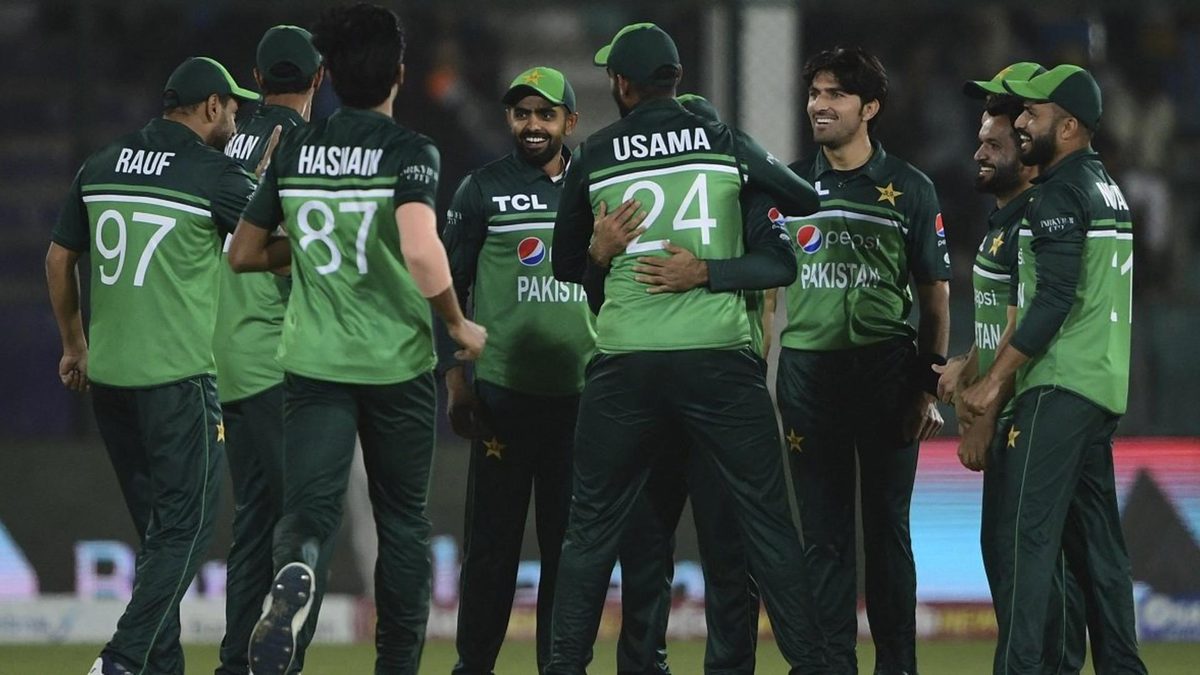
Despite their recent defeat in the home series against New Zealand, Pakistan are deservedly among the favourites at this year’s World Cup, writes Abhishek Mukherjee.
Let us start with the most basic of numbers. Since the lockdown, Pakistan have played 12 ODIs in Asia (all at home), of which they have won eight, lost three, and tied one. Of the teams guaranteed to play in the 2023 World Cup, their win-loss ratio (2.667) in Asia is superior to anyone barring Bangladesh’s 3 (nine wins, three defeats). For perspective, India (13 wins, five defeats) stands at 2.6.
While performance in Asia need not be the best predictive measure for the World Cup in India – pitches can be diverse on the colossal Indian subcontinent – it is perhaps the closest one can come for a team that has not played in India for some time.
Pakistan were tested in the ‘dead rubber’ ODI of 2020/21, in Rawalpindi, by Blessing Muzarabani (5-49), who extracted a tie out of nowhere. At Lahore four months later, Travis Head (101 in 72 balls) and Adam Zampa (4-38) helped Australia inflict an 88-run defeat upon them, but Pakistan clawed back to win the series 2-1.
Over a 10-match phase at home, these two were the only ODIs Pakistan did not win. Away from home, there were routed 0-3 in England, but there was also a 2-1 win in South Africa and a 3-0 rout in the Netherlands.
Overall, Pakistan have actually done better (13 wins, 7 defeats, ratio 1.857) than India (22, 12, 1.833) and England (14, 11, 1.272) over this period, and are marginally behind Australia (17, 9, 1.888). That is a reasonably good record.
What works and what does not
With 1,454 runs at 76.52 and a strike rate of 94 over this period, Babar Azam has expectedly been pivotal to Pakistan’s success. Babar is not merely 349 runs clear of anyone else: he also has the best average among those with five innings, and the best strike rate among those who have faced 900 balls.
While there is little doubt over Babar being the ODI batter in the post-lockdown period, Pakistan’s batting success has not been about him alone: Fakhar Zaman and Imam-ul-Haq have also make it to the group of 15 that has made 800 runs at over 40 while striking at over 85. Indeed, Pakistan’s Nos.1-3 have the highest batting average (52.46) over this period, some distance clear of India’s 45.89.
The problem begins thereafter. Barring Salman Agha (three of whose six ODIs have come against the Netherlands), no other Pakistan batter averages even 35 over this period. Pakistan’s Nos.4-7 average a woeful 25.06: of the ICC Full Members, only the West Indies have done worse.
But if Pakistan’s batting has been too top-heavy, their bowling has been incisive and, at times, brilliant. Shaheen Shah Afridi (22 wickets at 28.77 since lockdown) did not play in the New Zealand series, but Haris Rauf (30 wickets at 29.26) and Naseem Shah (18 wickets at 12.55) did. Pakistan’s much-vaunted three fast bowlers have never played an ODI together.
Not that it has affected the bowling, for Pakistan’s strategy over this period has revolved around all-rounders, who have stepped up in phases. Mohammad Wasim (18 wickets at 25.94, economy 5.38), Mohammad Nawaz (20 wickets at 20.85, economy 4.38), Iftikhar Ahmed (7 wickets at 30.28, economy 5.72), Shadab Khan (11 wickets at 42.27, economy 5.34), and Salman (economy 4.91) have all impressed in the middle overs at some point.
Whether Pakistan’s reliance on all-rounders has been the cause or effect of the underperforming middle order is debatable, but barring Babar, Fakhar, Imam, and Mohammad Rizwan, every batter who has played five times for Pakistan over this period has bowled, even if sporadically.
Pakistan’s strategy, thus, has revolved around the top four batters, three fast bowlers, and filling the rest of the XI with cricketers who can add depth to both departments.
It is a reasonable strategy, but most of Pakistan’s all-rounders – Shadab, Nawaz, Iftikhar, Salman, Khushdil Shah – are spinners, and are likely to play less of a role on pitches in India in October and November, where dew plays a prominent factor. The focus may be, thus, on Wasim, while a fourth fast bowler cannot be ruled out.
The top-heavy strategy has more or less worked for Pakistan over the past two and a half years. There is risk involved, in both batting and bowling, for a top-order collapse or an off day for a couple of bowlers can test their depth – can the all-rounders step up and define games when needed, rather than just chip in? But the mainstays are world class, and so Pakistan deserve to be considered World Cup contenders. Two losses to New Zealand shouldn’t change that.








